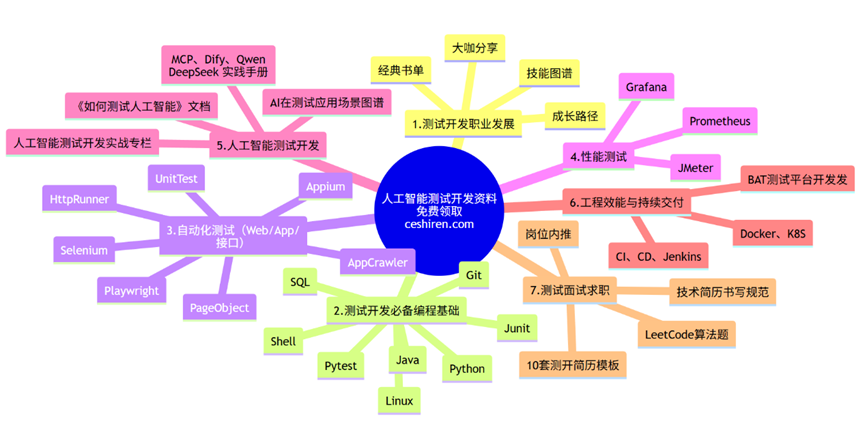从零开始学MCP(7) | 实战:用 MCP 构建论文分析智能体
在之前的教程中,我们已经了解了 MCP(Model Context Protocol)的基本概念和核心组件。本篇教程将通过一个实际案例,展示如何使用 MCP 构建一个能够分析学术论文的智能体。这个论文分析智能体将能够读取 PDF 论文,提取关键信息,并回答用户关于论文内容的问题。
一、项目概述
我们将构建一个具有以下功能的论文分析智能体:
读取和解析 PDF 论文
提取论文的基本信息(标题、作者、摘要等)
分析论文内容并回答用户问题
提供论文关键信息的总结
二、环境准备
首先,确保你已经安装了以下工具:
Node.js (版本 18 或更高)
npm 或 yarn
Claude 桌面应用或支持 MCP 的其它客户端
创建项目目录并初始化:
mkdir paper-analysis-agent
cd paper-analysis-agent
npm init -y
安装所需依赖:
npm install @modelcontextprotocol/server-nodejs pdf-parse
三、实现 MCP 服务器
- 创建服务器入口文件
创建 server.js 文件:
const { Server } = require('@modelcontextprotocol/server-nodejs');
const { analyzePaper, extractPaperInfo } = require('./paperAnalyzer');
class PaperAnalysisServer {
constructor() {
this.server = new Server(
{
name: 'paper-analysis-server',
version: '1.0.0',
},
{
capabilities: {
resources: {},
tools: {},
},
}
);
this.setupResources();
this.setupTools();
this.setupErrorHandling();
}
setupResources() {
// 资源相关设置将在后续实现
}
setupTools() {
this.server.setRequestHandler('tools/call', async (request) => {
const { name, arguments: args } = request.params;
try {
switch (name) {
case'analyze_paper':
returnawaitthis.analyzePaper(args);
case'extract_paper_info':
returnawaitthis.extractPaperInfo(args);
case'summarize_paper':
returnawaitthis.summarizePaper(args);
default:
thrownewError(`Unknown tool: ${name}`);
}
} catch (error) {
return {
content: [
{
type: 'text',
text: `Error: ${error.message}`,
},
],
isError: true,
};
}
});
}
setupErrorHandling() {
this.server.onerror = (error) => {
console.error('Server error:', error);
};
}
async analyzePaper(args) {
const { pdfPath, question } = args;
if (!pdfPath) {
thrownewError('PDF path is required');
}
const analysis = await analyzePaper(pdfPath, question);
return {
content: [
{
type: 'text',
text: analysis,
},
],
};
}
async extractPaperInfo(args) {
const { pdfPath } = args;
if (!pdfPath) {
thrownewError('PDF path is required');
}
const info = await extractPaperInfo(pdfPath);
return {
content: [
{
type: 'text',
text: JSON.stringify(info, null, 2),
},
],
};
}
async summarizePaper(args) {
const { pdfPath } = args;
if (!pdfPath) {
thrownewError('PDF path is required');
}
// 这里实现论文总结逻辑
const summary = "论文总结内容将在这里显示";
return {
content: [
{
type: 'text',
text: summary,
},
],
};
}
async run() {
awaitthis.server.connect();
console.log('Paper Analysis MCP Server is running...');
}
}
const server = new PaperAnalysisServer();
server.run().catch(console.error);
2. 实现论文分析器
创建 paperAnalyzer.js 文件:
const fs = require('fs');
const pdf = require('pdf-parse');
class PaperAnalyzer {
constructor() {
this.cache = newMap();
}
async parsePDF(pdfPath) {
if (this.cache.has(pdfPath)) {
returnthis.cache.get(pdfPath);
}
try {
const dataBuffer = fs.readFileSync(pdfPath);
const data = await pdf(dataBuffer);
const result = {
text: data.text,
info: data.info,
metadata: data.metadata,
};
this.cache.set(pdfPath, result);
return result;
} catch (error) {
thrownewError(`Failed to parse PDF: ${error.message}`);
}
}
async extractPaperInfo(pdfPath) {
const paperData = awaitthis.parsePDF(pdfPath);
const text = paperData.text;
// 简单的信息提取逻辑(实际应用中可能需要更复杂的 NLP 处理)
const titleMatch = text.match(/^(.+)\n\n(?:Abstract|ABSTRACT)/m);
const abstractMatch = text.match(/(?:Abstract|ABSTRACT)[\s\S]*?(\n\n|$)/i);
const authorMatch = text.match(/(?:Authors?|By)[:\s]+(.+?)(?=\n\n)/i);
return {
title: titleMatch ? titleMatch[1].trim() : 'Unknown',
authors: authorMatch ? authorMatch[1].trim() : 'Unknown',
abstract: abstractMatch ? abstractMatch[0].replace(/(Abstract|ABSTRACT)/i, '').trim() : 'Unknown',
pageCount: paperData.info.Pages || 'Unknown',
};
}
async analyzeContent(pdfPath, question) {
const paperData = awaitthis.parsePDF(pdfPath);
// 这里可以实现更复杂的内容分析逻辑
// 目前只是简单返回包含问题的响应
return`关于论文的分析结果:
问题: ${question}
回答: 根据论文内容,这里应该包含针对问题的详细分析。`;
}
}
// 创建单例实例
const analyzer = new PaperAnalyzer();
// 导出函数
asyncfunction analyzePaper(pdfPath, question) {
returnawait analyzer.analyzeContent(pdfPath, question);
}
asyncfunction extractPaperInfo(pdfPath) {
returnawait analyzer.extractPaperInfo(pdfPath);
}
module.exports = {
analyzePaper,
extractPaperInfo,
};
四、配置 MCP 客户端
创建 claude_desktop_config.json 文件(位于 Claude 桌面应用的配置目录):
{
"mcpServers": {
"paper-analysis": {
"command": "node",
"args": ["/path/to/your/paper-analysis-agent/server.js"],
"env": {}
}
}
}
五、测试智能体
创建测试脚本 test.js:
const { analyzePaper, extractPaperInfo } = require('./paperAnalyzer');
asyncfunction test() {
try {
// 测试信息提取
const info = await extractPaperInfo('./sample.pdf');
console.log('论文信息:', info);
// 测试内容分析
const analysis = await analyzePaper(
'./sample.pdf',
'这篇论文的主要贡献是什么?'
);
console.log('分析结果:', analysis);
} catch (error) {
console.error('测试失败:', error);
}
}
test();
六、运行和使用
启动 MCP 服务器:
node server.js
在 Claude 桌面应用中,你现在可以使用以下工具:
analyze_paper: 分析论文内容并回答问题
extract_paper_info: 提取论文基本信息
summarize_paper: 生成论文总结
示例对话:
用户: 请分析这篇论文 "/path/to/paper.pdf",并告诉我它的主要研究方法。
Claude: 我将使用论文分析工具来帮您解答这个问题。
[调用 analyze_paper 工具]
七、进阶功能扩展
你可以进一步扩展这个智能体:
集成 NLP 库:添加自然语言处理功能,如实体识别、关系提取等
添加引用分析:解析论文的参考文献和引用关系
实现可视化:生成论文内容的可视化分析报告
添加缓存机制:提高重复查询的响应速度
支持多种格式:扩展支持 Word、HTML 等其他文档格式
八、总结
通过本教程,你学会了如何:
创建一个基于 MCP 的论文分析智能体
实现 PDF 解析和内容提取功能
配置 MCP 服务器与 Claude 客户端的集成
构建实用的论文分析工具
这个项目展示了 MCP 在实际应用中的强大能力,通过组合不同的工具和资源,可以构建出专门针对特定领域的高效智能体。
记得在实际应用中处理错误情况、添加适当的日志记录,并考虑性能优化和安全问题。
MCP学习交流群

推荐学习

行业首个「知识图谱+测试开发」深度整合课程【人工智能测试开发训练营】,赠送智能体工具。提供企业级解决方案,人工智能的管理平台部署,实现智能化测试,落地大模型,实现从传统手工转向用AI和自动化来实现测试,提升效率和质量。



 浙公网安备 33010602011771号
浙公网安备 33010602011771号